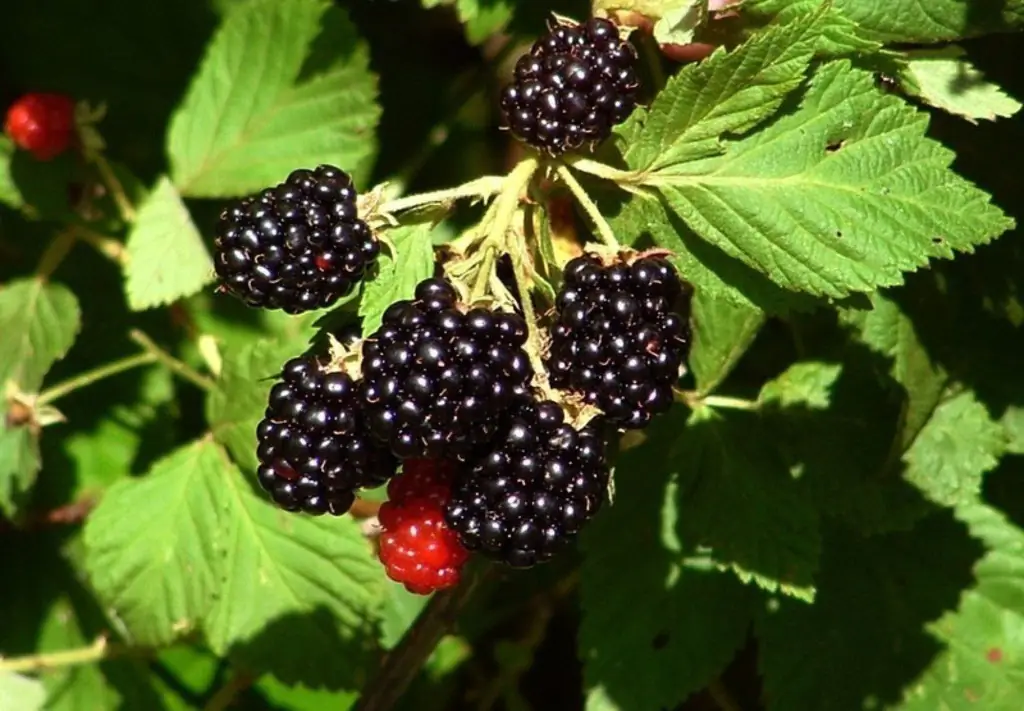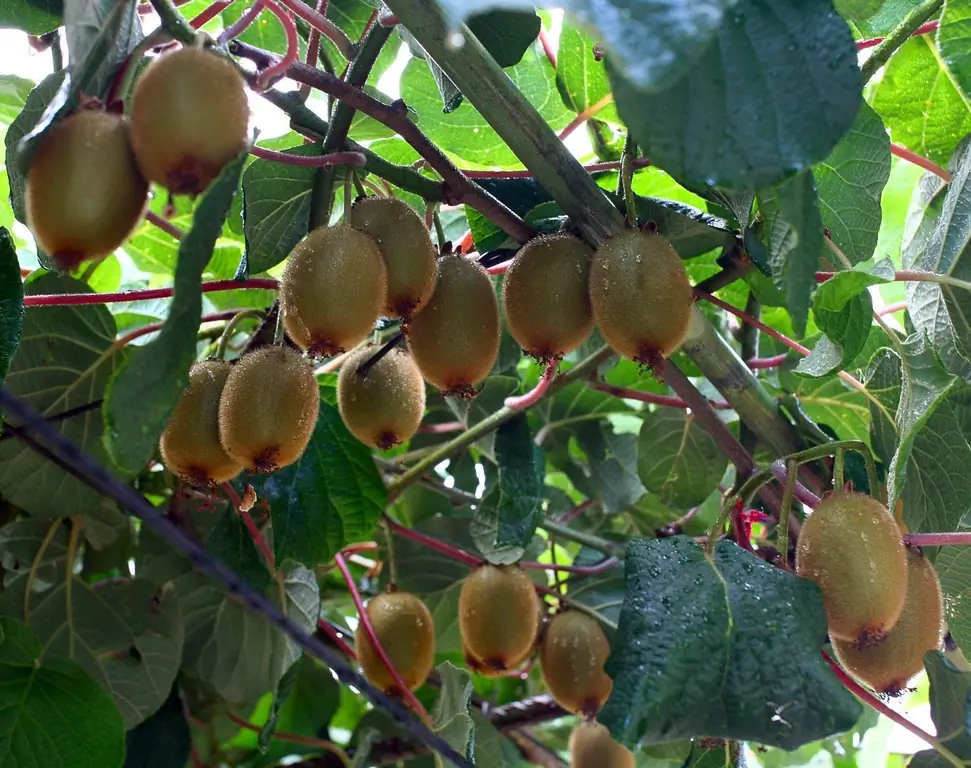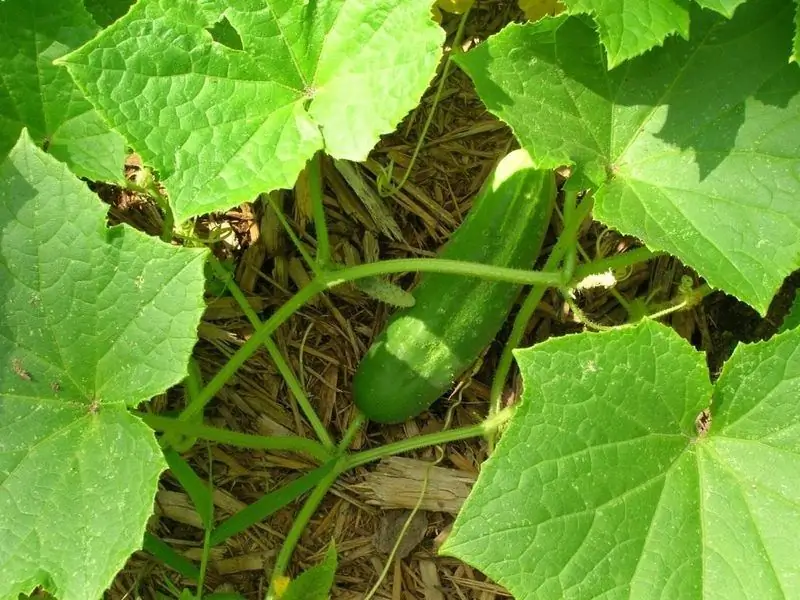
Table of contents:
- How to grow a large corn crop in your area
- Features of corn as a garden plant
- Popular varieties of corn and their features
- How to grow corn from seeds and seedlings
- Corn care
- Harvesting
- Video: Growing Sweet Early Corn, Part 1
- Video: Growing Sweet Early Corn, Part 2
- Video: Growing Sweet Early Corn, Part 3
- Landing features for different regions
- Video: the secrets of growing corn
- Author Bailey Albertson [email protected].
- Public 2023-12-17 12:53.
- Last modified 2025-06-01 07:32.
How to grow a large corn crop in your area

Corn has been known to us for a long time, it is successfully cultivated all over the world, using not only in cooking, but also in animal husbandry for livestock feed. This crop is so easy to care for that it is grown by both large farms and gardeners in their personal plots. Perhaps the most important and difficult thing in growing corn is the correct selection of varieties. Nevertheless, you need to know the rules of agricultural technology, starting with planting and ending with the time of harvest.
Content
- 1 Features of corn as a garden plant
-
2 Popular varieties of corn and their features
- 2.1 Zea Mais - ordinary, or seed corn
- 2.2 Varieties and hybrids derived from common corn
-
3 How to grow corn from seeds and seedlings
- 3.1 Choosing a suitable site
- 3.2 Dates of planting seeds and seedlings
- 3.3 How to prepare the soil before planting
- 3.4 How to plant seeds in open ground
- 3.5 Seedling method
-
4 Maize care
- 4.1 Weeding and hilling
- 4.2 Watering and feeding
- 4.3 Disease and pest control
- 5 Harvesting
- 6 Video: growing sweet early corn, part 1
- 7 Video: Growing Sweet Early Corn, Part 2
- 8 Video: Growing Sweet Early Corn, Part 3
- 9 Landing features for different regions
- 10 Video: the secrets of growing corn
Features of corn as a garden plant
Corn was brought to Europe in the era of the great geographical discoveries from the American continent, where it was grown since ancient times by the Mayan and Aztec tribes. True, at that time this culture did not look quite the way we used to see it. The modern appearance of the representative of the family of cereals (bluegrass) is due to long years of selection. Forage varieties have been developed that are grown on an industrial scale for livestock, and more gentle ones used in cooking.

Corn varieties used in cooking have softer and more tender grains.
All types of corn have the same traits:
- The plant is monoecious and is cross-pollinated as it has dioecious inflorescences.
- The strong root system of maize grows up to 1.5 m deep into the soil. In addition, closer to the ground level, the stem forms supporting roots, which provide the plant with stability, as well as ensure the absorption and retention of moisture with nutrients.
- Maize has a strong, erect stem, which, depending on the variety, can grow from 60 cm to 6 meters. The average height is about 3 meters. Unlike other cereals, the stem of corn is not hollow.
- The leaves of an adult plant often reach 1 m in length and 10 cm in width. They are light green, smooth on the outside and slightly pubescent on the inside, with solid edges and horizontal veins. Each stem has 12-23 leaves.
-
An ear of corn is a complex ear. Its male inflorescence is located at the top and looks like a panicle, while the female ones are in the leaf axils. The fruits of corn are caryopsis. Their color and size depend on the type of plant. One ear with kernels can reach a weight of 35 to 500 g.

Ear of corn An ear of corn is a complex ear
Popular varieties of corn and their features
Nowadays, corn has many varieties that not only look different, but also differ from each other in taste and composition of the grain. Some of them are successfully cultivated in the middle zone and even in the regions of the North.
Zea Mais - ordinary, or seed corn
This type has been familiar to us for a long time and is the most common not only in our country, but throughout the world. There are its subspecies (varieties), the differences between which are in the morphological characteristics of the grains.
-
Sweet corn is not only very popular in our country. She became the basis for creating many hybrids. The grains of this variety have a wrinkled surface, they are glassy on the cut. The taste is sweet due to the accumulation of a large amount of sugars by the time of full ripening. Sweet corn is very tasty when cooked; it is widely used in cooking and canning industry.

Sweet corn kernels Sweet corn is the most popular of all varieties
-
Waxy maize has a matte and smooth grain skin. The grain structure in the section resembles wax. The boiled ears are juicy, the taste is pronounced, not very sweet.

Waxy maize Grains of waxy corn are matte, smooth, resembling wax on the cut
-
Popcorn, or popcorn, has a glossy, smooth grain surface. There are two types: rice and pearl barley, with the taste of these cereal flour, respectively. The peculiarity of this variety is that its grains burst when heated.

Popcorn corn The popcorn variety is traditionally used to make popcorn
-
Starchy corn is predominantly used in the manufacture of cornstarch. A distinctive feature of this variety is shiny and smooth grain, mealy inside.

Starchy corn Mealy grains of starchy corn are used in the production of starch
-
Serrated corn is shaped like a tooth with a depression on the top. Especially intensively grown in the USA for use as livestock feed.

Tooth corn Toothed corn got its name from the peculiar shape of the grains.
-
The grains of flint corn are slightly wrinkled, they are white and yellow, round and even on top. They contain a lot of hard starch, so corn sticks and flakes are made from them.

Flint corn Hard flint corn is used to make corn flakes and corn sticks
Varieties and hybrids derived from common corn
-
"Spirit" corn is known for its fast ripening and high productivity. Its seedlings can be planted at the end of May, and after 2 months it will be fully ripe. It grows well in almost all regions of Russia. The plant grows to a height of 2 m, ears 20 cm long consist of large grains of yellow and bright yellow color. The pulp is juicy, the taste is delicate and sweet.

Corn Spirit The early-ripening variety of corn Spirit has a high yield
-
The Sundance corn variety is short. Each plant forms 2-3 cobs with a diameter of 5 cm and a length of 20 cm. The plant is sown in open ground at the end of May, it takes 70 to 95 days for full maturation, depending on the climate in the region and weather conditions. The cob is yellow, elongated, slightly flattened at the top and bottom. The variety is well suited for canning.

Corn sundance Sundance corn is great for canning
-
Dobrynya corn is a hybrid early ripening variety, unpretentious to the composition of the soil and resistant to diseases. The plant should be planted in May, no earlier than the temperature reaches 10 ° C. The stem reaches a height of 170 cm. The ears are large, the taste of the grains is sweet. Ripens in 70 days after germination. Used for canning, cooking, freezing.

Dobrynya corn Dobrynya corn is resistant to most diseases
-
Hopi corn differs from other varieties in its unusual black color with a purple tint. The grains of this variety are sweet, tender, with a noticeable nutty flavor. They contain anthocyanins - substances with pronounced antioxidant properties, which give an unusual color. The Hopi variety is used for the preparation of mixtures, corn chips, national drinks, and is also used in cosmetology.

Hopi corn The exotic Hopi variety has an original nutty flavor
Somehow I became interested in this unusual corn. At first I thought it was photoshop (you can see something else on the Internet), then, when I saw it live, it was some kind of joke. Well, for example, the ears are painted on the outside with varnish, or octopus ink is introduced into the grains, which is used as a food coloring. It turned out that this is just such a variety, and, by the way, very ancient. It's just that at one time, yellow and orange corn became much more popular. But in its homeland, in Peru, the Hopi variety is still grown on an industrial scale, and it got its name from the Hopi Indian tribe. And this corn has a ton of varieties with color gradation from red to dark purple. They are even subdivided into three primary colors: blue-gray, standard blue, and hard blue. This is how they are indicated in the registry. Whether it is possible to grow Hopi corn in our latitudes, I will not presume to say. I think if we sell her seeds (though the price "bites" within 600 rubles per 200 g bag), then you can provide suitable conditions and get a harvest, for example, in a greenhouse.

Hopi corn cobs can be not only black, but also red or purple
How to grow corn from seeds and seedlings
Corn on your site is a delicious treat for the whole family and a good help in caring for farm animals. And in order for a crop to give a good harvest, you need to take care of the conditions for its cultivation in advance.
Choosing a suitable site
Many believe that it is possible to grow corn seedlings successfully only in the south, in regions with a warm climate. This is not true: the seedlings will be well accepted in the middle lane, if you pick up a warm, well-lit place that will be protected from the wind.

To grow corn, you need to choose a well-lit area
It is also very important to consider the predecessors that were planted in this area last season. For corn, these are:
- roots;
- cucumbers;
- cereals;
- tomatoes;
- legumes.
The author of the article would like to add one interesting observation on my own. A good neighborhood for corn is also useful. The pumpkin proved to be an ideal neighbor. I even wondered why next to her the corn sprouts and grows so well. It turns out that the wide leaves provide a shade that protects the roots of corn from overheating, and at the same time prevents the soil from drying out. You can also plant legumes nearby. Their root system releases nitrogen, and corn needs it for growth and development.
First take care of the composition of the soil in which the culture will grow. It should be well-drained, warm, fairly humid, and high in humus.
Planting dates with seeds and seedlings
Keeping the planting time correct will ensure that corn germinates quickly and grows healthy. Its time depends on the choice of landing method.
-
In open ground, seeds are sown no earlier than the end of April or at the beginning of May. By this time, there is no longer a risk of recurrent frosts, and the soil warms up to + 12 ° C.

Sowing corn seeds Before sowing seeds, the soil should warm up properly
- For growing corn seedlings, seeds are sown in convenient containers in early May. The grown seedlings are transferred to open ground no earlier than mid-June.
How to prepare the soil before planting
Not every gardener can boast of fertile soil on his site. And although corn is unpretentious, it will still be useful to prepare the soil before planting. It is better to do this in advance in the fall, since you will have to provide drainage and good moisture, and in a few days such work cannot be done. Therefore, in the fall, dig the area under the corn at least 30 cm deep and add organic matter. It can be rotted manure or phosphorus-potassium fertilizers.
Very acidic soil on the site should be treated with lime at the rate of 2-3 kg per 10 m².
During spring work, loosen the soil thoroughly to provide the right amount of oxygen and remove sprouted weeds.
How to plant seeds in open ground
The corn seeds must be soaked before planting. This process also has its own rules that will help you avoid mistakes and not spoil the seed. 5 days before sowing the seeds, heat them to a temperature of + 35 ° C and place them in warm water. Remember to change the water at least 2 times a day.
During this time, the seeds will swell, and some will even sprout. Now they can be planted in the soil. In well-loosened soil, make small furrows. Distribute the grains over them, deepening them by 5-7 cm. Observe the distance: between plants it should be 40 cm, row spacing - about 1 m. Expect the first shoots, depending on weather conditions, in 2-14 days.

Follow the timing and pattern of planting corn, and seedlings will appear in two weeks
Most gardeners prefer to use the square-nest sowing method, recognizing it as the most successful. In this case, 3 grains are placed in each hole. They are covered with moist soil, and dry soil is added on top. At least one of the seeds will sprout and be accepted, and if all three have sprung up, then the weaker seedlings will need to be removed.
Seedling method
If you live in the cold climate of the northern region, you'd better grow corn seedlings, and plant them in an open garden when it gets warm. Growing with seedlings is also good for those gardeners who want to harvest earlier than others.
First you need to prepare a suitable container. For this, it is convenient to use paper or plastic cups. Special cassettes for seedlings are perfect.
The next step is to prepare the soil mixture. For her, take:
- 2 parts compost;
- 1 part peat;
- 1 part sand;
- 1 part ash.
Mix the ingredients thoroughly to create an even, nutritious soil and fill the containers with it. Place one seed in each glass to a depth of 2-3 cm, sprinkle with sand on top. Place the cups with seedlings on the windowsill from a well-lit side. Corn needs room temperature along with moderate watering.
Towards mid-June, transplant the seedlings to the garden bed along with a lump of earth. The hole should be 2-3 cm deeper than the size of the coma. Use the same scheme as for planting with seeds: several rows about a meter apart, the distance between the plants is 40 cm. After planting, sprinkle the hole with sand.

Seedlings must be placed in the ground without disturbing the earthen coma
Corn care
Correct fit is half the battle. Now you need to provide the corn with good care. It is uncomplicated, but nevertheless necessary.
Before I tell you about the features of care, let me give you some advice. Although corn stalks are strong and dense, their tall stature can cause the plant to fall to the ground. Even strong roots may not hold the trunk in dry ground. To avoid this, provide a support for the corn. To do this, it will be enough to put several high posts along the garden bed at a distance of 1.5 m from each other and nail a crossbar to them. One such support is enough for 2-3 rows. You can also place two props along the entire bed.

Adult corn may need a support
Weeding and hilling
On an industrial scale, the hilling procedure is performed using special machines. In a home growing environment, you can huddle plants with a hoe, flat cutter or hiller. Corn needs this because it has a long, thick stem that can break in the wind. Loose raised soil will add stability to the stem. In addition, hilling contributes to the rapid growth of corn: at the same time weeds are removed, moisture in the planting is better retained, the soil is saturated with oxygen.
Watering and feeding
Corn does not need top dressing immediately after planting. The first time fertilization is applied when 6 leaves appear on the plant. The best remedies for this are humus, compost, and chicken or cow dung. Chemical fertilizers are also used:
- phosphate;
- potash;
- nitrogen;
- liquid ammonium nitrate.
Water the corn regularly and keep the soil dry, especially during cob formation. After that, watering can be reduced. Please note that there should be no stagnant water in corn plantings.

Water the corn sparingly when you notice the soil is dry
By the way, not so long ago I learned an interesting way to increase the yield of corn. It turns out that it needs to be pollinated. This is done like this: from the top of the stem, you need to cut off the male flowers, and shake off the pollen from them to the female ones. So far, I have tried this method only once, and it seems to me that it really works. This year we will pollinate again.
Disease and pest control
The entire corn crop can die if the plant becomes sick or attacked by insects. To avoid this, regularly examine the seedlings for symptoms. Each disease manifests itself in one way or another in the early stages.
-
Fusarium is one of the most common diseases caused by mold. Affected grains are covered with a bloom of white or pink. If a young sprout gets sick, it turns brown and eventually dies off. Since the pathogen remains in the soil and on plant debris, it is very important to burn the stems and loosen the soil after harvest. To avoid the appearance of fusarium, treat grains and crops with fungicides, plant corn on time in well-heated soil.

Fusarium on the cob of corn corn Fusarium is the most common and dangerous disease of corn
-
The head smut is common in the southern regions. But in colder regions, it can also be harmful, since its pathogens - teliospores, are resistant to any weather conditions and are stored for a long time both in the soil and in seeds. The head smut mainly affects inflorescences, panicles and ears. The plant grows poorly and becomes bushy. The panicles turn into a dusty mass, the ears turn completely black. To avoid disease, observe crop rotation, use modern hybrid varieties for planting, and remove plant debris after harvest.

Dusty corn smut Dust smut inflicts irreparable damage to the plant, affecting the inflorescences and ears
-
Bubble smut is a fungal disease that occurs in all regions. It manifests itself in the form of wrinkled rough swellings on the leaves and cobs. The largest of them contain teliospores. Over time, these swellings (galls) disappear, remain in the ground and cause re-infection. The disease develops due to drought or too thick crops. To prevent the appearance of blister smut, pickle the grains, pick only healthy ears during harvest, and remove plant residues from the garden.

Bubble smut corn Prolonged drought or thickened crops can cause blistering smut.
-
Stem rot is a disease that occurs in regions with high humidity. On the affected plant, dark spots appear at the bottom of the stem and on internodes. The stem softens, rots and dies over time. The causative agent of stem rot is a fungus that overwinters on plant debris and causes re-infection. To prevent disease, treat seeds with fungicides, follow crop rotation, and fertilize the soil.

Stem rot When affected by stem rot, corn stalks rot and die off
-
Rust is a disease caused by rust fungus. It manifests itself as light yellow spots on the underside of the leaf. Over time, the spots become pustules containing ripening spores and take on a brown tint. A plant infected with rust dries out and does not bear fruit. To avoid disease, choose resistant hybrids before sowing, as sugar varieties are most susceptible to rust. Also treat the seedlings with antifungal drugs, after harvesting, plow the soil on the site.

Rust on corn leaves Rust manifests itself as brown spots on the leaves.
In addition to disease, maize crops can be severely affected by insect pests.
-
Root aphids damage the succulent tissues of the plant. The growth of maize slows down, a massive defeat leads to the death of plantings. In addition, a weakened plant becomes very susceptible to fungal diseases. Root aphids are active in dry and hot weather. The alternation of insecticides and fungicides during the growing season will help to get rid of it.

Root aphids on corn Due to the influence of root aphids, corn greatly slows down growth and does not bear fruit
-
The Swedish fly itself does not harm plants; its larvae are dangerous. They damage seedlings, causing holes and tears to appear on the surface of the corn, leaves do not unfold completely, and the stems become brittle. In addition, the affected plant is very susceptible to fungal diseases. To protect crops, plow the soil thoroughly, treat the seedlings with insecticides and kill weeds in a timely manner.

Swedish fly Swedish fly larvae can make corn very susceptible to fungal diseases
-
Corn moth - just as in the previous case, insect larvae harm corn. They are activated in spring and infect stems and panicles. First of all, leafy and central veins turn yellow. Over time, they break, become covered with dark spots, causing the leaves to bend. As a preventive measure, thoroughly harrow the soil before planting. To get rid of the corn moth, seedlings and adult plants are treated with insecticides.

Corn moth larvae The target of the corn moth larvae is the stems and panicles of the plant.
-
The scoop infects the aerial part of the plant. The most dangerous are cotton and meadow moths. They gnaw the leaves and penetrate the cobs, which decreases the yield and deteriorates the quality of the product. To protect corn from scoops, weed the weeds in a timely manner, plow deeply and loosen the soil in the area, destroy plant residues, treat seedlings with insecticides, and set pheromone traps.

Scoop The scoop is one of the most dangerous pests of agricultural crops
Harvesting
Corn ripens in several stages. The first of these is milk maturity, during which the seeds are soft and light yellow, and the leaves covering the ear are difficult to separate. Further, the tips of the brooms darken. The next stage is biological maturity: the leaves turn yellow and dry, the grains turn orange, the tassels turn brown.

Harvesting can be done in two stages: at milk or biological maturity
The crop must be harvested on time. The harvest time depends on what you need the corn for. For example, if you want to consume it fresh (for example, boil it), pick off the cobs at the milky stage of maturity. For the preparation of popcorn or for coarse grains, corn at the stage of biological maturity is better suited.
There are several guidelines for proper harvesting:
- Don't pick all the ears at once. Start collecting those closest to the top.
- Gently break off the ears from the stem at the base.
- Store the harvested ears in a dry place. Place them on a raised platform so rodents have no access to them. For example, you can fold them into mesh bags and hang them from the ceiling.
Video: Growing Sweet Early Corn, Part 1
Video: Growing Sweet Early Corn, Part 2
Video: Growing Sweet Early Corn, Part 3
Landing features for different regions
Although corn is considered a southern, heat-loving plant, thanks to selection, it has become unpretentious in cultivation and care. It is cultivated in almost all regions, and the process most often differs only in planting time.
- In the Moscow region, the Leningrad region and Central Russia, corn can be immediately planted in open ground. The most suitable time for this is mid-May: the risk of late frosts is close to zero, the soil is dry and warmed up well. It is recommended to sow cold resistant varieties. They can be planted in early May, but the bed will need a film cover.
- In the southern regions, maize is sown in late April - early May. As a rule, in such an area by this time the air temperature becomes constantly warm, and the ground warms up to 10-12 ° C.
- In the climate of Siberia and the Urals, growing corn can be difficult. Sowing of a crop in open ground is practically not done. The best option is to grow seedlings, which are then planted in the garden no earlier than mid-June.
- For Ukraine with a predominance of steppe, forest-steppe and steppe zones, there are peculiarities and timing of planting. In the steppe zone, the climate is mild and warm, so corn can be sown from mid-April directly with grains into the ground. For the forest-steppe zone, the optimal sowing time is the end of April. The forest zone has a harsher climate, so it is better to sow corn there no earlier than mid-May, and to get a guaranteed result, it is better to grow seedlings.
For any region, there is one rule for planting corn: the soil must already warm up to at least 10 ° C, otherwise the plant will not develop and die.
Video: the secrets of growing corn
As you can see, a good harvest of corn is not difficult, and growing it does not require much effort from you. But this culture will significantly enrich your table with a variety of dishes or provide quality food for your pets and birds.
Recommended:
Care And Cultivation Of Blackberries In The Country: From Seeds, From Cutting, Video And Photo

Tips and practical advice for growing blackberries from seeds and cuttings. Soil preparation, watering, fertilization, care during the growth period
How To Plant Dill And Parsley In The Country And How To Grow Them Correctly, Video

Useful tips for planting and growing dill, parsley. Seed preparation, correct soil treatment
How To Grow Plumeria From Seeds At Home: Step-by-step Instructions With Photos And Videos, Further Care Of The Plant

Growing plumeria seeds at home. Germination and planting tips. Required care: watering, fertilizing, etc. Pests and the fight against them
How To Grow Kiwi (at Home From Seeds, Seeds, Etc.) + Video And Photos

Step by step instructions for growing kiwi at home. Growing from seeds and seeds, taking care of seedlings and plants during the growth period
How To Plant And Grow Cucumbers In The Open Field: Plant Seeds, Properly Care For Plants (water, Form, Tie Up)

What varieties and hybrids of cucumbers can be grown in the open field. Features of planting seeds and seedlings. Choice of place and timing. The nuances of care and formation
